


| I n t u i t i v e |
 |
E l e c t r o n i c s |
|
|
||
Of these entities, Resistance is the only real physical property; the rest--for the most part--are the result of their encounter with Resistance. Resistance is the property of a material to resist the flow of Electrons. Everything has this resistive property: Air resists greatly the flow of electrons, but they do flow--especially if you are swinging a "nine-iron" on a hilltop, under low hanging dark clouds in the summertime! Copper wire also resists the flow of electrons--but not very effectively. Superconductors are the only materials that DO NOT resist the flow of electrons. Speaking of the flow of electrons, that is the definition of Current. And, you guessed it: Electrons exert a potential force measured in VOLTS and--you're ahead of me--is called Voltage. WOW, that was easy, we've covered it all in a few short sentences! ---------------------Oh yea--except for POWER. POWER, is the result of VOLTS, AMPS, and OHMS, all getting together! That is, the Energy released by Electrons (I) flowing through a Resistance (R), the number of which being determined by the Electron potential (E). [I = E/R] [P = E x I] OK, you have a 100 Watt light bulb in a drop cord (Drop Light); You plug it in to the 120 VOLT wall outlet and turn it on. The light bulb offers a resistance to the 120 volt (electron potential) flow of electrons coming out of the wall socket--they're just sitting there doing nothing, until they find a path Home... If the light bulb's resistance is too low the fuse will blow! If the light bulb's resistance is too high, not much will happen; But, if the light bulb's resistance is "Just Right," it will consume 100 WATTS of Power, to produce energy in the form of light; also, it gets hot as Hell--put your tongue on it, you'll see what I mean. The light bulb/Resistor
performed a useful function: it put out light to read by, and it also produced
Heat. Heat that is thought of as "Loss," is technically still light,
but at a wavelength few can read by.
|
||||||||||||||||
Hear what Mrs R.J. of Duluth had to say: "That LOAD certainly made my flowers Grow." |
||||||||||||||||
| . |
|
|
|
Switch: |
Relay: |
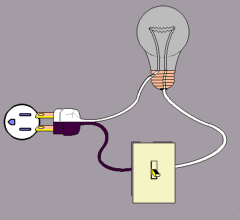 |
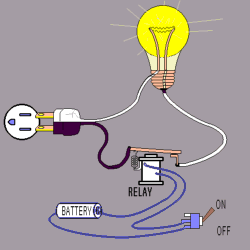 |
|
(Variable Resistor) |
(Variable Resistor) |
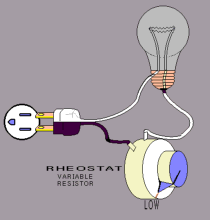 |
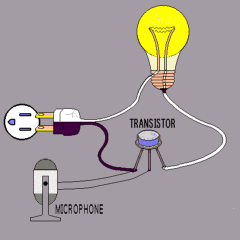 |
|
|
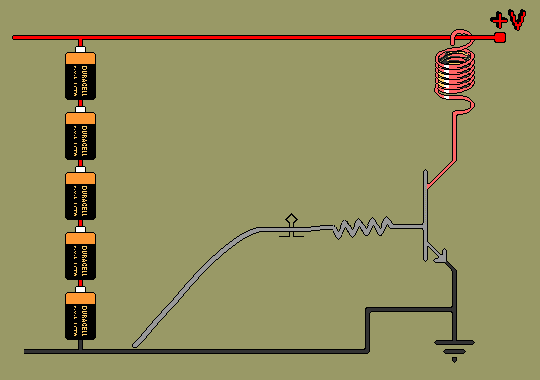 |
|
|
Energy = Work + Losses |
 |
Capacitors:-What are they Good For? |
Z = |
|
|
 |
| This
page is dedicated to all those who, after finishing "n" years of Engineering
School, now want to know: "What tha Hell was that
all about?"
I intend to Start at the Switch, and go from there! |
||
Ohm's Law
It's role as a Current to Voltage Convertor, and as a Voltage to Current Convertor.
What is a Capacitor if not a poor storage battery?
When is an Inductor an Inductor and when is it a Magnet?
So what is a Transistor if not a Variable Resistor--Fast, but nevertheless, a Resistor? |
||
Concepts: |
||
| Impedance
Resistance Reactances |
Offset & Bias
A.C. Coupling D.C. (Direct)Coupling D.C. Restoration |
Gain |
|